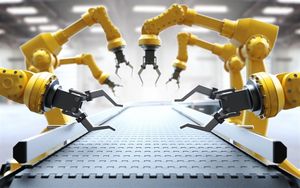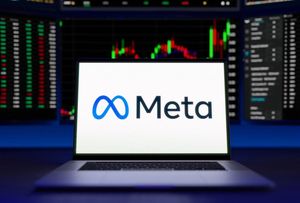
The global semiconductor industry, a foundational pillar of modern technology and a critical enabler for the burgeoning artificial intelligence revolution, is experiencing unprecedented growth. However, this explosive expansion is shadowed by a deepening crisis: a severe and widening talent gap. As of late 2025, the demand for skilled workers—from cutting-edge chip designers to precision manufacturing technicians—is far outstripping the available supply, threatening to derail innovation, impede manufacturing capacity, and compromise national security objectives. The immediate significance of this challenge cannot be overstated, as the industry stands at a critical juncture where its future hinges on its ability to rapidly cultivate a robust and highly specialized workforce.
This talent deficit is not merely a growing concern; it is an immediate bottleneck impacting the efficacy of massive global investments, including the U.S. CHIPS and Science Act. With projections indicating a need for over a million additional skilled workers globally by 2030, and tens of thousands of roles potentially unfilled in key regions like the United States by the end of the decade, the industry faces a monumental task. The urgency is amplified by an aging workforce, intense competition for STEM graduates, and the highly specialized nature of semiconductor manufacturing, creating a complex challenge that demands innovative and collaborative solutions from governments, academia, and industry leaders alike.
The Microcosm of a Macro Challenge: Specifics of the Semiconductor Talent Crisis
The semiconductor industry's talent crisis is multifaceted, impacting nearly every segment of its intricate ecosystem. The most acute shortages are found in highly specialized engineering and technical roles crucial for both the design and fabrication of advanced chips. For instance, the United States alone faces a projected talent gap of approximately 59,000 to 146,000 workers across engineering and technician roles by 2029. Critical positions in high demand include chip designers, manufacturing engineers, design engineers, and process engineers, each requiring years of dedicated education and hands-on experience. Engineering technicians, vital for operating complex fabrication lines, are particularly scarce; while demand is expected to reach 75,000 by 2029, only about 1,000 new technicians enter the field annually.
This current shortage is distinct from previous industry cycles due to the rapid advancement of semiconductor technology itself. Modern manufacturing processes, such as Extreme Ultraviolet (EUV) lithography and advanced 3D chip stacking, demand an entirely new level of technical prowess and precision. Traditional educational pipelines, often slow to adapt, are struggling to produce graduates with the job-ready skills required for these cutting-edge techniques. Furthermore, the pervasive integration of artificial intelligence (AI) and machine learning (ML) into chip design and manufacturing processes means that even traditional roles now require competencies in data analytics, automation, and AI-driven troubleshooting. This continuous evolution necessitates not just new talent, but also the continuous upskilling and reskilling of the existing workforce.
Initial reactions from the AI research community and industry experts underscore the gravity of the situation. Leaders from companies like Intel (NASDAQ: INTC) and GlobalFoundries (NASDAQ: GFS) have publicly highlighted the workforce challenge as a primary impediment to realizing the full potential of new investments and technological breakthroughs. Experts warn that without a concerted effort to address the talent gap, the pace of innovation in AI, 5G, and other critical technologies could decelerate, potentially ceding technological leadership to regions better equipped with skilled personnel. The sentiment is clear: the most advanced chip technology is useless without the human capital to design, build, and operate it.
Competitive Battlegrounds: How the Talent Gap Reshapes the Industry Landscape
The escalating talent shortage in the semiconductor industry is profoundly reshaping the competitive landscape for companies across the globe. Major players such as Taiwan Semiconductor Manufacturing Company (TSMC) (NYSE: TSM), Samsung Electronics (KRX: 005930), Intel (NASDAQ: INTC), and GlobalFoundries (NASDAQ: GFS), who are investing billions in new fabs and R&D, stand to be most directly impacted. Companies with proactive and robust workforce development strategies—those that successfully attract, train, and retain top talent—will gain a significant strategic advantage. Conversely, those that falter risk production delays, reduced innovation capacity, and a diminished market share.
The competitive implications extend beyond direct manufacturing. Tech giants like Apple (NASDAQ: AAPL), NVIDIA (NASDAQ: NVDA), and Google's parent company Alphabet (NASDAQ: GOOGL), which heavily rely on advanced semiconductors for their products and AI initiatives, face potential disruptions to their supply chains and product roadmaps. The inability of chip manufacturers to meet demand due to workforce limitations could slow the development and deployment of next-generation AI hardware, impacting everything from data centers to autonomous vehicles. This situation intensifies the competition for existing skilled workers, leading to higher recruitment costs, increased salaries, and aggressive talent poaching within the industry.
Moreover, the talent crisis creates opportunities for specialized startups and educational technology firms that can offer innovative solutions for workforce training, upskilling, and recruitment. Companies that can bridge the gap between academic theory and practical industry demands, or those leveraging AI to streamline design and manufacturing processes, may find fertile ground. However, for many existing players, the challenge is existential. Their market positioning and strategic advantages will increasingly be tied not just to technological prowess, but also to their human capital strategy. Governments, through initiatives like the U.S. CHIPS Act, are attempting to mitigate these risks by funding workforce programs, but the sheer scale of demand requires a deeper, industry-wide commitment.
A Foundational Challenge: Wider Significance in the AI and Tech Landscape
The semiconductor talent crisis is not an isolated issue; it is a foundational challenge that permeates the broader AI landscape and global technological trends. As of October 20, 2025, the demand for advanced chips, particularly those optimized for AI workloads, is skyrocketing. This unprecedented demand is the primary driver behind the semiconductor industry's expansion, meaning that a bottleneck in workforce development directly threatens the pace and scale of AI innovation. Without sufficient engineers and technicians, the physical infrastructure required to power the next generation of AI—from advanced data centers to edge computing devices—simply cannot be built or operated efficiently.
The impacts of this talent deficit are far-reaching, extending into economic stability and national security. A robust domestic semiconductor industry is considered critical for economic competitiveness and resilience, especially in an era of geopolitical tensions. Failure to address the talent gap could undermine efforts to reshore manufacturing, leaving nations vulnerable to supply chain disruptions and dependent on foreign sources for essential technologies. This situation carries significant geopolitical weight, as countries actively compete not only for chip manufacturing capacity but also for the highly specialized human talent required to sustain it.
Comparisons to previous industrial revolutions are apt. Just as the industrial age required a new class of skilled factory workers and engineers, and the information age demanded software developers, the AI era necessitates a highly specialized workforce capable of designing, manufacturing, and maintaining the complex hardware that underpins artificial intelligence. The current crisis highlights a critical mismatch between rapid technological advancement and the slower pace of human capital development. Concerns about losing technological leadership, an inability to meet global demand for critical components, and a potential slowdown in the AI revolution are legitimate and pressing.
Forging the Future: Expected Developments and the Path Forward
Looking ahead, the semiconductor industry and its governmental partners are expected to intensify efforts to address the talent gap in both the near and long term. By 2029 and 2030, projections show the talent gap widening further, necessitating immediate and sustained action. Near-term developments will likely focus on strategic partnerships between industry, educational institutions (universities, community colleges, and vocational schools), and government. These collaborations aim to develop specialized training programs, apprenticeships, and internships that provide job-ready skills aligned with industry needs. Programs like DOL-certified apprenticeships and WIOA grant-funded initiatives are poised to expand, offering funded pathways into the industry.
In the long term, significant investments in STEM education, from K-12 initiatives to advanced degree programs, will be crucial to build a sustainable pipeline of talent. This includes increasing funding for federal R&D programs through agencies like the NSF, NIST, DOE, and DOD. Companies such as Intel (NASDAQ: INTC) and GlobalFoundries (NASDAQ: GFS) are already investing in comprehensive internal training, upskilling, and reskilling programs, which will become even more prevalent. Potential applications and use cases on the horizon include the widespread adoption of AI-powered training tools, virtual reality simulations for complex manufacturing processes, and predictive analytics to identify future skill requirements.
However, significant challenges remain. Sustaining long-term funding for educational initiatives, changing public perception of the semiconductor industry to attract diverse talent, and rapidly adapting curricula to keep pace with accelerating technological change are formidable tasks. Experts predict a multi-pronged approach: reforming high-skilled immigration policies to retain more international advanced degree students, leveraging automation and AI to augment human capabilities rather than replace them entirely, and redefining career paths to make the industry more appealing. The consensus is that only through continuous innovation in workforce development can the industry hope to meet the demands of the AI era.
A Critical Inflection Point: The Road Ahead for Semiconductor Talent
The semiconductor industry's talent crisis represents a critical inflection point in the history of technology. The key takeaway is clear: the industry's unprecedented growth, fueled by the insatiable demand for AI and other advanced technologies, is at risk without a corresponding surge in skilled human capital. This development is profoundly significant in AI history because it highlights that even the most advanced technological breakthroughs are ultimately constrained by human ingenuity and capability. The availability of talent is now as crucial as access to capital or intellectual property.
The long-term impact of this challenge will determine not only the future trajectory of the semiconductor industry but also the pace of global technological advancement. Failure to address the talent gap could lead to a fragmented and less innovative global tech landscape, while success could usher in an era of unprecedented progress. What to watch for in the coming weeks and months includes new public-private partnerships, announcements of expanded training programs, and legislative efforts aimed at bolstering STEM education and skilled immigration. The success of initiatives like the CHIPS Act will be a key indicator of progress, as their effectiveness is inextricably linked to the availability of a qualified workforce. The race to build the future of semiconductors is ultimately a race to build its workforce.
This content is intended for informational purposes only and represents analysis of current AI developments.
TokenRing AI delivers enterprise-grade solutions for multi-agent AI workflow orchestration, AI-powered development tools, and seamless remote collaboration platforms.
For more information, visit https://www.tokenring.ai/.







